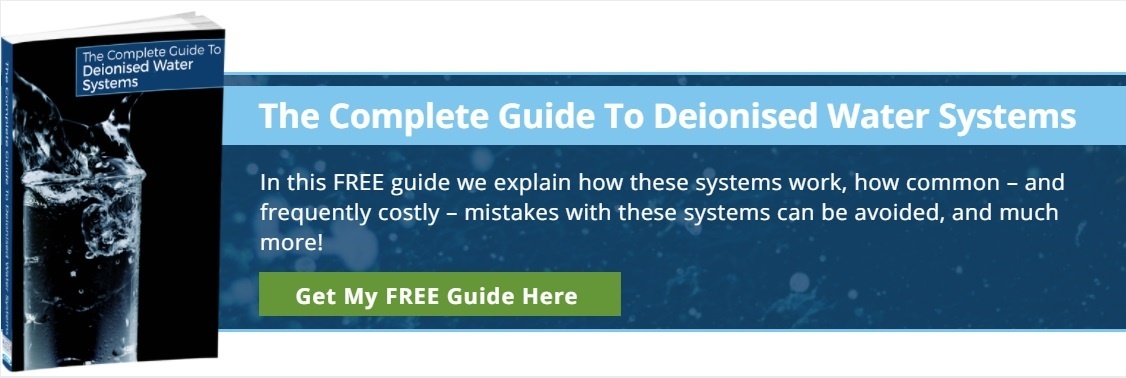
Demineralised water is vital in many industries, and enhances many others. However, many confusions exist about what demineralised water is, why it is important, and the best ways to achieve it. Here is a plain English guide to demineralisation!
What Is Demineralised Water?
When water has had most of its salt and mineral ions extracted, it is known as ‘demineralised’. This is different to its more familiar cousin, ‘distilled’. Distilled water involves removing most of the bacteria and other potentially harmful organic compounds, such as fungi, from the composite.
However, stripping ions out of water through demineralisation goes one step further, leaving a very pure chemical solution. When it is done correctly, active ions such as Calcium, Magnesium, Sodium, and Nitrates are absent. This means that the behaviour of the water is more predictable and less chemically reactive.
Why Is Demineralisation Useful?
We often think of water as straightforward H2O – Hydrogen and Oxygen. In reality, natural water is filled with a vibrant cocktail of different ions, and may contain dozens of elements. These can cause problems in industries that require precise chemistry, such as medical sterilisation, or for sectors that have equipment that is vulnerable to corrosion.
Mineralised water can provide an excellent feeding ground for bacteria and viruses, and renders many scientific and industrial processes invalid. In order to ensure that water really is H2O and nothing else, demineralisation is the only option.
Where Will I Find Demineralised Water?
In almost everything! It’s in your car battery, cosmetics, and is in your fire extinguisher. Almost every manufacturing process will require demineralised water at some point. However, acquiring it can be a little challenging. Sterile water can be bought in bulk, but this is an inefficient option for most companies. Instead, installing a reliable water treatment system provides a steady supply, and is ecologically more responsible.
How Is It Done?
There are two main ways to remove the ions from water. Ion-exchange resins create the chemical reactions necessary to exchange various ions for hydroxide. At minimum of two types of resin are needed in order to work with ions that are positive or negative, as these have very different chemical behaviours.
The alternative to using ion-exchange resins is to add electricity into the mix, as the introduction of anodes and cathodes allows the demineralisation to be continuous. When very pure water is needed, several stages of demineralisation are usually required. This may include reverse osmosis, which is a type of filtration that involves sensitive membranes.
Which Is The Right System For My Company?
This depends upon the level of purity that your industry demands. Demineralisation is an extremely precise process that requires careful architecture as well as high quality equipment. Regardless of the method, poor installation can result in weaknesses in the system. The best option is to ask for an evaluation, which will establish the most efficient and productive solution for your site. Aerospace, automotive, oil and gas, and medical industries rely upon a multi-stage system that offers exceptional water purity.
What Next?
Demineralisation is vital to many core industries. If you would like to learn more, please download our Guide To Industrial Water Deionisation Systems.
Image source: Pixabay











 We are a specialist independent company involved in water purification and water treatment technologies
We are a specialist independent company involved in water purification and water treatment technologies


